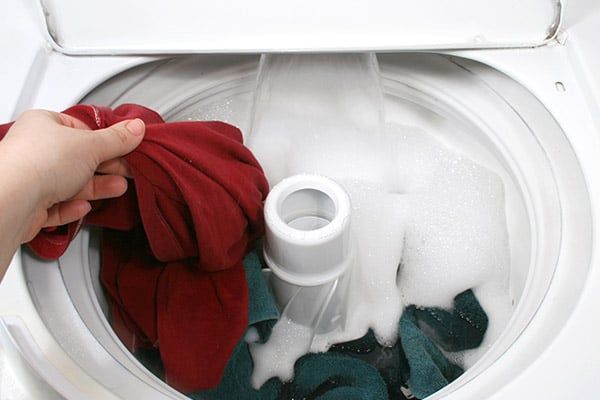What Clothes Need to Be Dry Cleaned? A Comprehensive Guide
Understanding what clothes need to be dry cleaned is fundamental in the maintenance of your wardrobe. Ignoring the tiny laundry tags on your favorite sweater might seem insignificant, but these little guides could be key to prolonging the lifespan of your clothes. Often, we overlook the “Dry-Clean Only” directions, considering it as a mere recommendation when, in reality, it might be crucial to protecting the garment. Likewise, if a label suggests dry-cleaning (without the exclusive term “only”), it doesn’t necessarily mean a trip to the dry cleaner is essential. While it might seem confusing, the distinction is indeed important.
Preserving Your Wardrobe: What Clothes Need to Be Dry Cleaned
To simplify your laundry routine, we have put together a list of items that undoubtedly require dry-cleaning and those that can be adequately managed at home. Remember, a competent dry cleaner will always provide guidance on whether a specific item requires professional care or not.

Which Clothes Have to Be Dry Cleaned?
- Silk Garments: Silk possesses strong, natural fibers that don’t fully absorb the dyes used to color them. Washing silk with soap and water may lead to color loss, shrinkage, and fabric distortion. Opting for dry cleaning ensures that the colors remain vibrant and the fabric remains intact.
- Woolen Items: Wool can be as durable as silk if not exposed to water, which can cause it to shrink. Dry cleaning mitigates this risk, thereby extending the lifespan of your woolen garments.
- Embellished Attire: Garments adorned with intricate elements like sequins, beads, or metal studs often require professional care due to their fragile nature.
- Suits: To maintain the crispness and longevity of your suits, especially woolen ones, opt for dry cleaning when spot cleaning isn’t enough.
- Pleated Garments: Pieces with pleating require professional cleaning to preserve and restore their pleats effectively.
- Severely Stained Items: No one tackles stubborn stains better than professional cleaners. With access to potent degreasers, soaps, and solvents, they can handle the most challenging stains.
- Suede: Suede, a type of leather primarily derived from lambskin, cow, or goat hide, requires careful handling. It is sensitive to light, moisture, and various cleaning agents. Professional dry cleaners who use non-toxic chemicals can assure proper care for your suede items.
- Leather: Leather garments typically come with special care instructions that must be explicitly followed. Dry cleaning should only be used for severe stains, such as ink or oil spills.
- Linen: Derived from flax, linen is strong and absorbent, drying faster than cotton. It can be hand-washed and air-dried, but incorrect handling can cause it to lose its crispness and overall quality. Hence, dry cleaning is the most ideal method for linen.
- Rayon: Unlike other textiles, rayon is semi-synthetic, made from purified cellulose fibers with dye. It can bleed when washed in warm water, causing shrinkage and loss of shape. While it can be hand-washed in cold water with mild detergent, dry cleaning is the safest option.
- Furs: Furs, especially vintage ones, should be entrusted to professionals to prevent shrinkage or drying of the skin when exposed to water.
How to Determine Dry Clean vs Dry Clean Only
The garment label usually provides the first clue. Manufacturers are required to list at least one way to clean a garment. If the tag says “dry-clean only,” heed this advice. If it only says “dry-clean,” this suggests dry cleaning as the preferred method, not the sole one.
Consider the fabric too. Unless the label indicates otherwise, silk, acetate, velvet, wool, and taffeta items should go to the dry cleaner. There are some items that have a do not dry clean symbol, make sure to follow the instructions for these fabrics.
What Fabrics Should Not Be Dry Cleaned
Can polyester be dry-cleaned and can cotton be dry-cleaned? Usually yes, but we’d recommend washing them at home in most cases! Cotton, linen, cashmere, polyester, acrylic, and nylon can usually be washed at home. Ensure to check for colorfastness by dabbing a mild detergent on a hidden seam with a moistened cotton swab. If any dye bleeds, dry cleaning is the safest route. For dealing with trickier items like washing shoes and coats, you’ll want to read care instructions per item, but some can be done in the washer if you’re feeling brave.
Remember, the care label on your garment is your best guide. If it suggests dry cleaning as an option rather than a strict requirement, you may have other washing methods at your disposal. Always test for colorfastness first, especially when dealing with vibrant or dark colors. If you’re trying to keep cotton towels fluffy there are ways to wash them without dry-cleaning to keep them soft.

How to Wash and Dry Delicate Garments at Home
Once you’ve deciphered what clothes need to be dry cleaned, it’s possible to wash suitable items at home. Use the gentlest setting on your washing machine for durable clothes that don’t bleed. Place the item inside out in a mesh bag and run a short, delicate cycle.
Hand-wash clothing that’s delicate but not exclusively dry-clean only. Use cold water to prevent shrinkage and color bleeding, coupled with a mild detergent.
Always air-dry delicate items to prevent damage from excessive heat. Squeeze out excess water gently, then lay the garment flat on a white towel or let it air-dry over a working dryer. The only time delicate items should go in a dryer is when using an at-home dry cleaning kit with a special steamer bag.
By paying close attention to the care labels and understanding what clothes need to be dry cleaned, you can ensure your wardrobe maintains its quality and longevity. Remember, when in doubt, always consult with a professional dry cleaner, and for any appliance service and repair needs you can always give Oak Valley a call.

